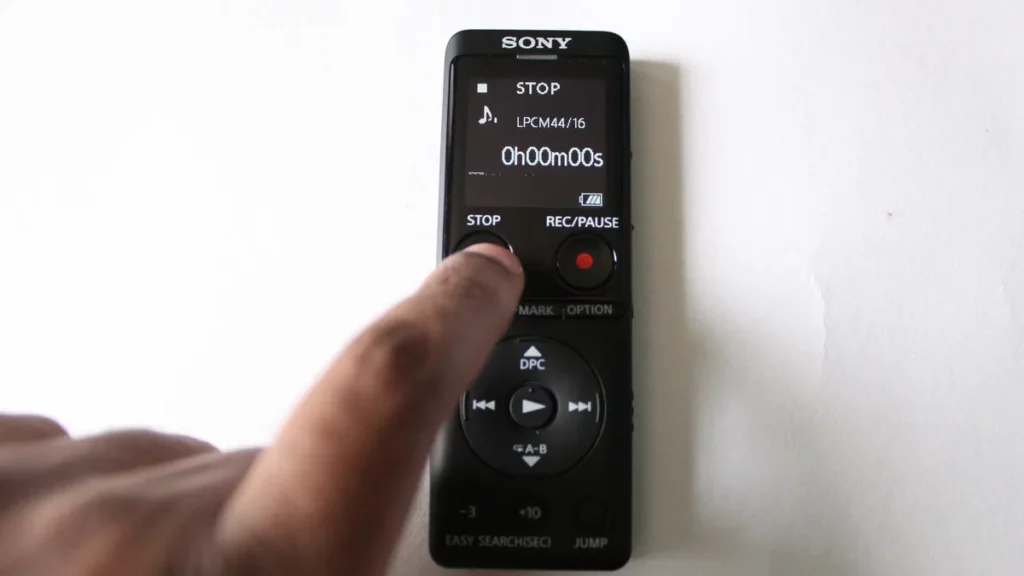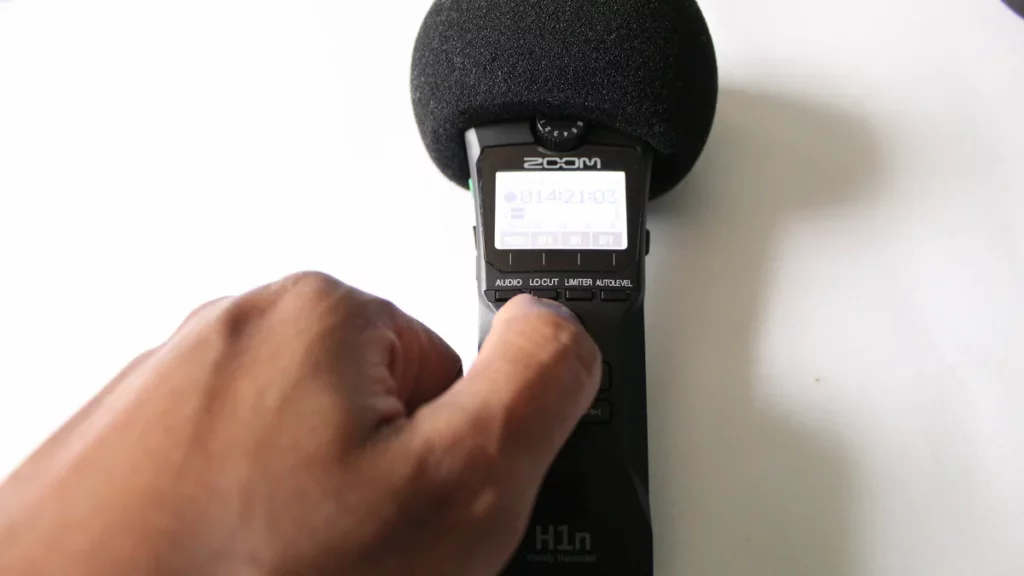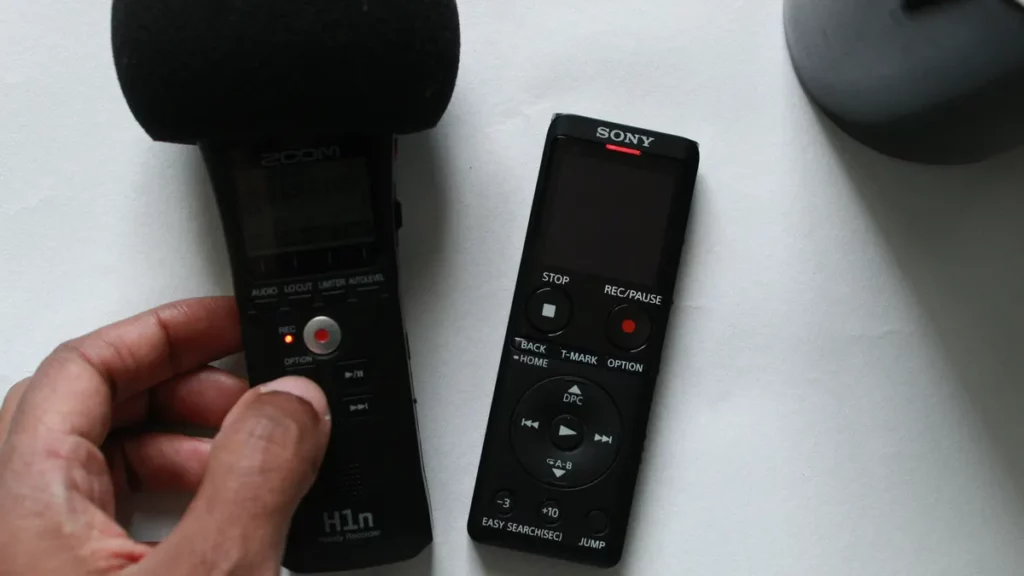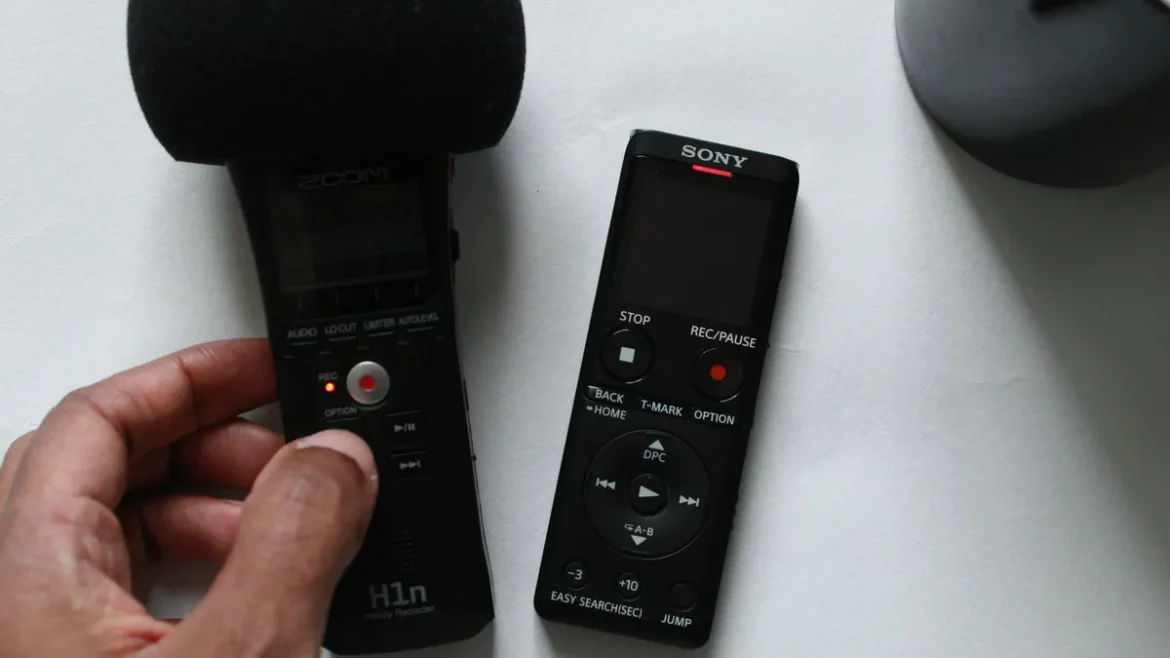In this post I am going to compare the Sony ICD-UX570 to the Zoom H1n.
If you are reader of our blog, you know I don’t like making these comparisons. And that’s mainly because voice recorders are not interchangeable.
The best voice recorder for you will depend on your intended use. And that will be the main focus of this post; functionality or best use cases for each recorder. If you want an in-depth review of each recorder, check out our Sony ICD-UX570 review and/or the Zoom H1n review.
In this post, I am going to share with you one feature (and corresponding use case) of each voice recorder that I like, and dislike while comparing it to the other recorder.
Let’s get to it.
SONY ICD-UX570

The good
If you have read my review of the Sony ICD-UX570 you know that I love this recorder. And that’s because of the internal battery. I have to admit, when I first got its predecessor, the ux560 – I was skeptical about a voice recorder having an internal battery. But 8 years later, I have grown to love it.
That’s because the internal battery on the Sony ICD-UX570 make it very convenient to use. It takes the Sony ICD-UX570 less than a second to power up. I have timed it.
Within a couple of seconds, I can grab my Sony ICD-UX570, start it, and start recording. Within 2 seconds. That is very convenient.
Compare this to the Zoom H1n. First I have to look for AAA batteries – you don’t want to store your recorder with alkaline batteries in it. Then insert the batteries into the recorder and power it on. Set the date and time, then start recording. That takes about 40 seconds. And if you don’t have an SD card inserted into the recorder, that’s another 10 seconds before you can start to record. With the batteries and the SD card in the Zoom H1n, it still takes 10 seconds to power up!
Once you factor in the time it takes you to find your batteries and a compatible SD card, it realistically takes you 2-5 minutes before you can start recording on the Zoom H1n. While on the Sony ICD-UX570, you can start recording in 2 seconds. That’s a huge win for the Sony ICD-UX570 over the Zoom H1n.
If you want an easy to use recorder, get the Sony ICD-UX570
The bad
Though I love the Sony ICD-UX570, it has its limitations. The glaring one, in comparison to the Zoom H1n, is its inability to record audio of higher quality than 44100Hz/16bit. While it’s nice to be able to record uncompressed audio you only have the option of recording LPCM 44100Hz/16bit audio on the Sony ICD-UX570.
There are instances where you may need to record your audio data at a higher bitrate, for instance if you are conducting oral history interviews. Or if you are recording in noisy location and you plan to post process your audio. So I do wish I was able to record higher quality audio with the Sony ICD-UX570.
Zoom H1n

The good
What I really love about the Zoom Zoom H1n is the design. This is a digital recorder that is built like a microphone. It fits perfectly into my hand. And I don’t currently own another recorder that is as good as being a handheld microphone. It just feels very comfortable in your hand. With the Sony ICD-UX570, you will need to get accustomed to holding it up – it’s designed to be placed on surface.
And for this reason, and the X-Y stereo configuration on the Zoom H1n (good for recording at proximity and less phase issues), I consider the Zoom Zoom H1n to be the best handheld digital voice recorder.
If you plan to conduct interviews in locations you’ll need to hold up a digital recorder to your subject (in the field, on the go), then this is the recorder you should get. And that’s how I use it. But it’s also a great recorder when used as a USB microphone. So podcasting, Skype, screencasts, or when you are conducting remote interviews, that’s when the Zoom H1n shines.
The bad
One of the biggest gripes I have with the Zoom H1n is that it only compatible with microSDHC cards. I really don’t mind that it does not come with internal memory, so you always need to record into a microSD card. But the fact that you are limited to 32GB max SD card is really unfortunate.
If you record audio at 96000Hz/24bit, you only have 15 hours of recording capacity. That might not be a deal breaker, but microSDHC cards are becoming harder to find. I recently had a chat with Samsung and they were not forthcoming about when their microSDHC cards are going to come back to the market.
Have they discontinued production? That’s my guess.
A quick search at Amazon and you will find 64GB microSDXC cards that are at the same price or cheaper than 32GB microSDHC cards. And that’s not a good sign.
Hopefully, this is not going to balloon into a big issue for Zoom H1n owners in the near future. Knock on wood.
If you plan to record audio at 96000Hz/24bit, my advice would be to buy a few 32GB microSDHC, or remember to transfer audio to your computer frequently.
In conclusion

I recommend the Zoom H1n and the Sony ICD-UX570. If you are looking for an easy to use recorder, get the Sony ICD-UX570. However, if you are looking for a high fidelity, hand-held voice recoder consider the Zoom H1n.
That’s it for this post. Hope you enjoyed it and it has answered your burning questions on Zoom H1n and Sony ICD-UX570 comparison. If you have further questions or suggestions, let me know in the comment section below. Over to you.



Leave a Reply